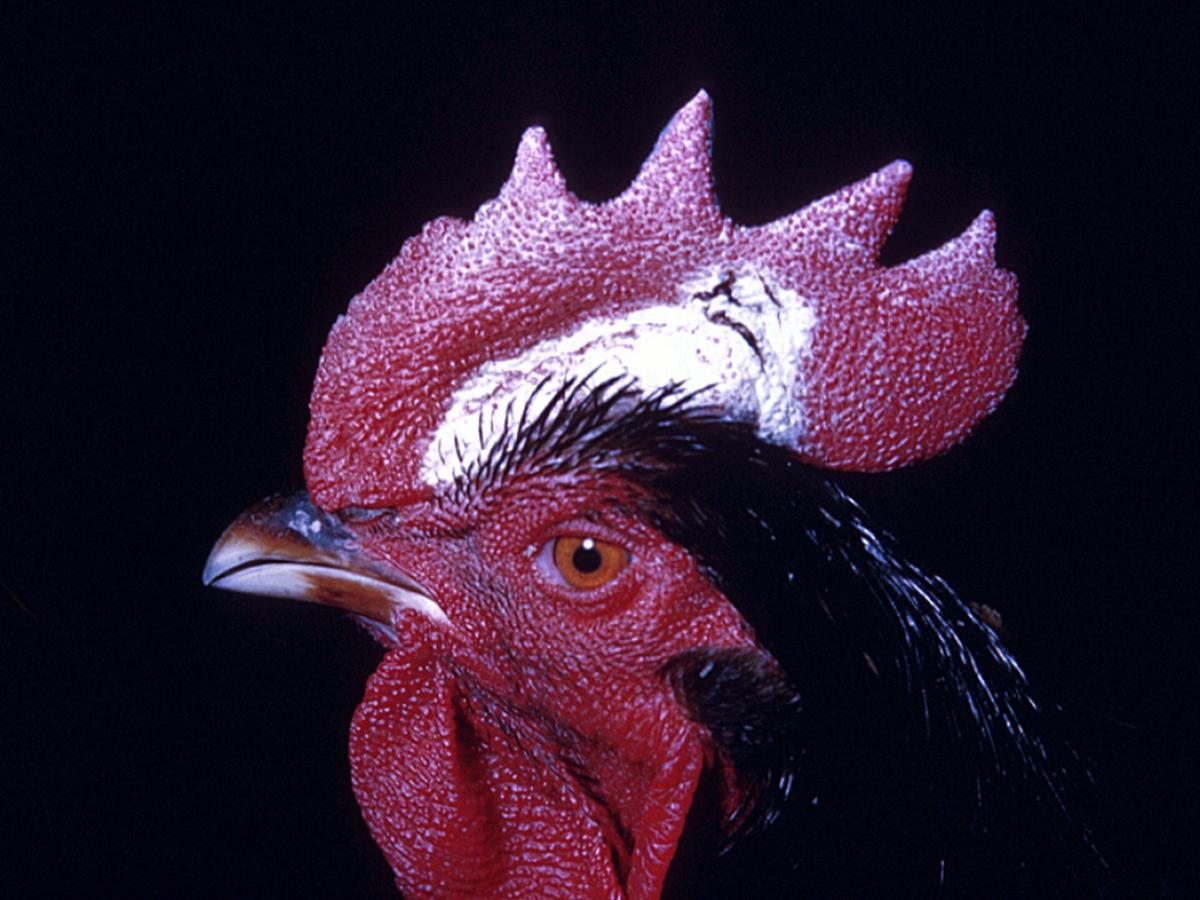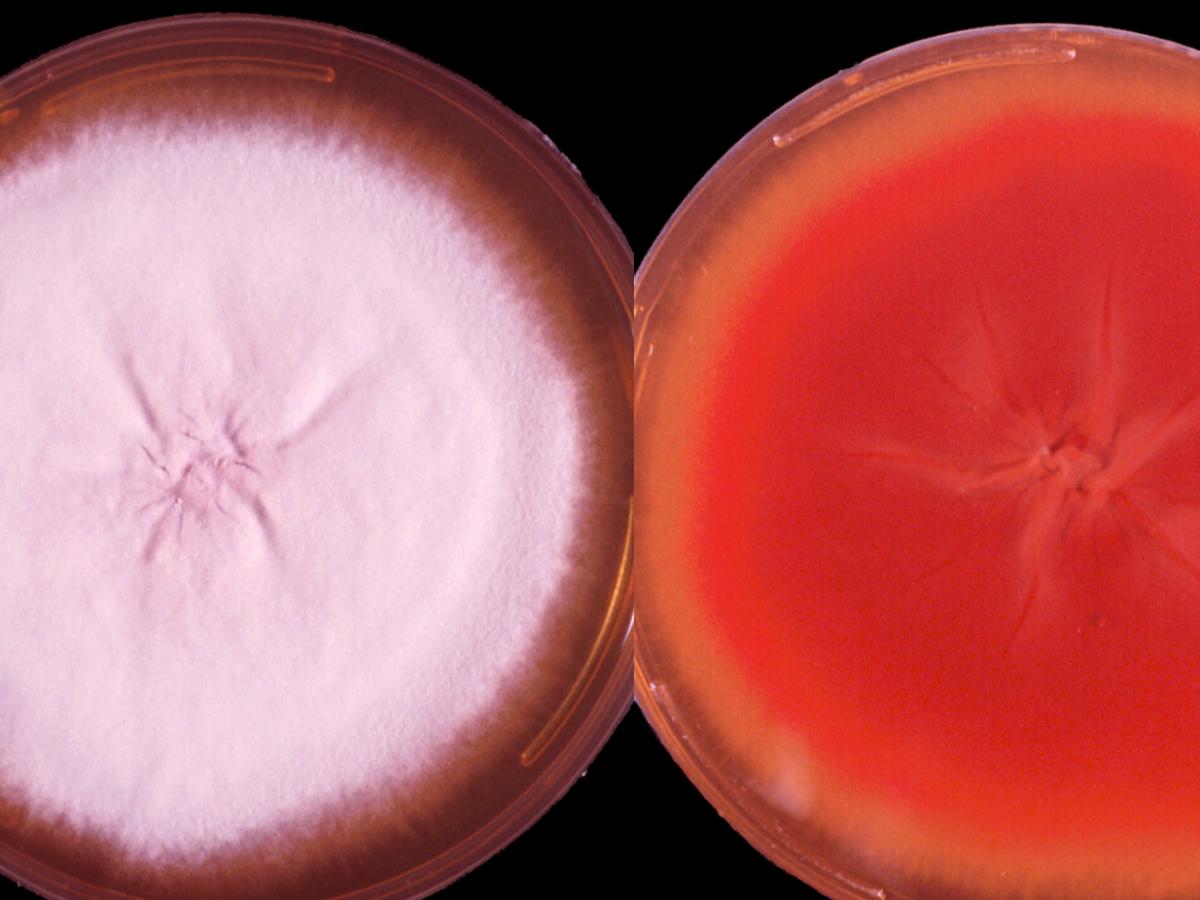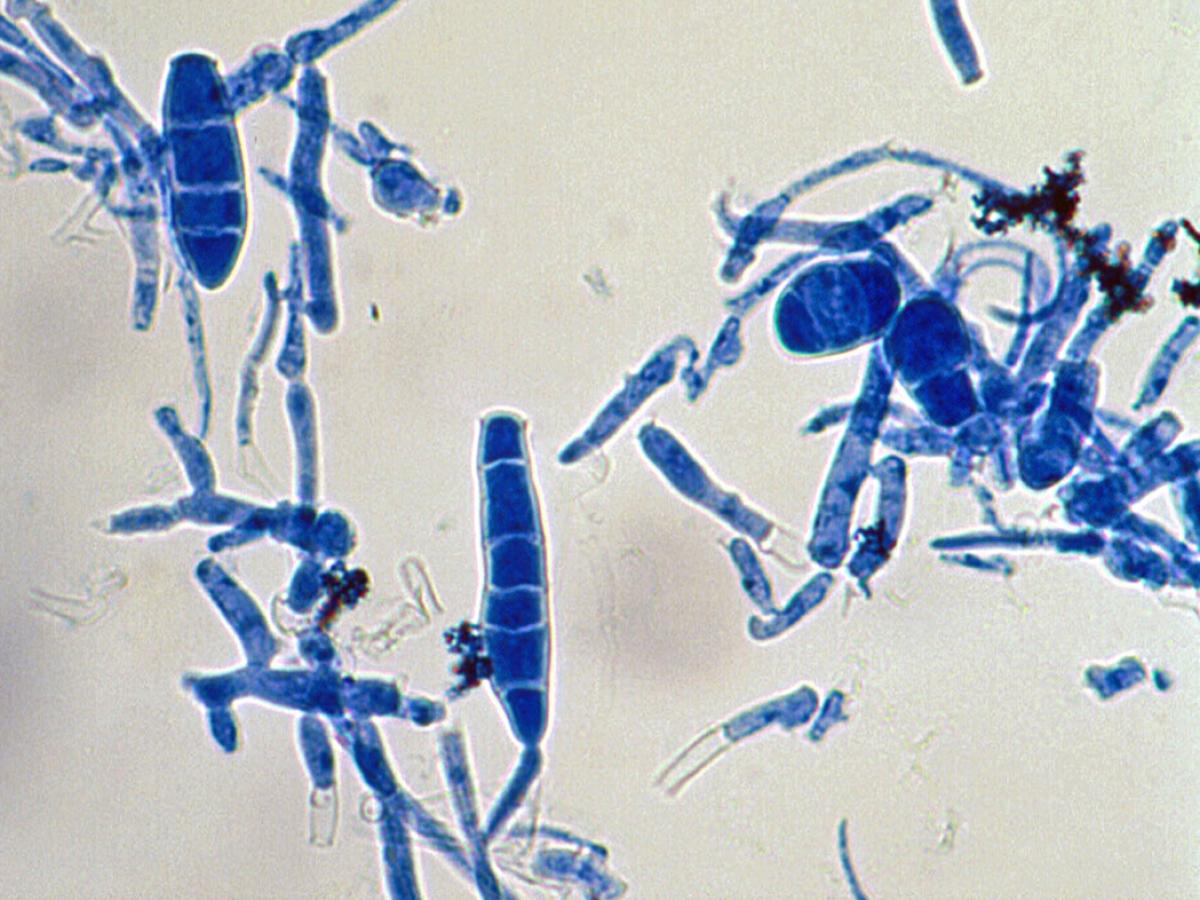Lophophyton

Fowl favus caused by Lophophyton gallinae.
Lophophyton gallinae
Synonymy:
Microsporum gallinae
A recent taxonomic revision of the dermatophytes has reduced the genus Lophophyton to a single species (de Hoog et al. 2017).
Lophophyton gallinae is a zoophilic fungus causing fowl favus in chickens and other fowl, affecting the comb and wattles producing “white comb” lesions. A rare cause of tinea in humans. Invaded hairs show a sparse ectothrix infection but do not fluoresce under Wood’s ultra-violet light.
RG-2 organism.

Culture of Lophophyton gallinae.
Morphological description:
Colonies are flat with a suede-like texture and are white with a pinkish tinge in colour. Some cultures show radial folding. An orange-pink “strawberry” reverse pigment is usually present. Macroconidia, when present, are usually five to six celled, thin to thick-walled, slightly echinulate, cylindrical to clavate with a narrow base and blunt tip, 15-60 x 6-10 µm. Microconidia are ovoidal to pyriform in shape.

Macroconidia of Lophophyton gallinae.
Key features:
Macroconidial morphology, culture characteristics and clinical lesions in chickens.
Molecular identification:
ITS sequencing is recommended.
References:
Rebell and Taplin (1970), Rippon (1988), Gräser et al. (2008), Cafarchia et al. (2013), de Hoog et al. (2015, 2016).
